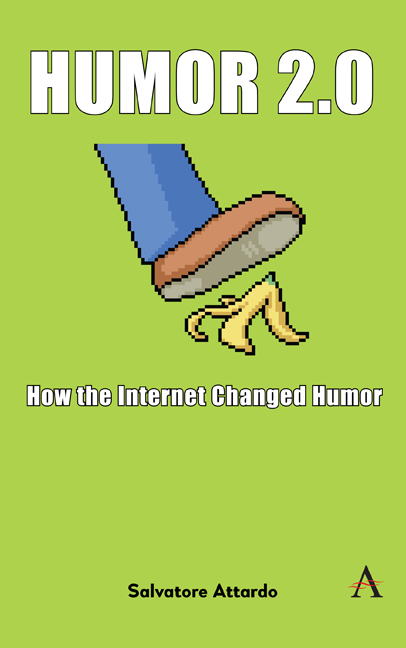21 - Reaction Videos
Published online by Cambridge University Press: 28 February 2024
Summary
The reaction video is another genre unique to digital humor. According to Wikipedia, reaction videos go back to the 1970s in Japan (https://en.wikipedia.org/wiki/Reaction_video). The basic idea is that one shows a video of someone reacting to something, usually another video. There is a general consensus that one of the first set of viral reaction videos were the reactions to the infamous “2 girls 1 cup” pornographic video (which features coprofagia—the eating of excrement—and worse; Bliss, 2022). This is in line with the old observation that whenever there is a technological advance in the field of communication, pornography is among the first uses. Bliss (2022) maintains that a lot of reaction videos still revolve around pornography. In this sort of reaction video, the amusement or pleasure we draw is from watching the disgust of the viewers or their amusement, embarrassment or other emotional reaction, alone. In particular, Warren-Crow (2016) focuses on screaming “like a girl.” Indeed, according to Anderson (2011), the point of this sort of reaction video is that it allows the experience of a vicarious thrill without having to actually experience watching coprofagia, for example.
There are other, different kinds of reaction videos. In the genre that concerns us here, the screen is divided into two parts, either side by side, or one above the other, or in some cases the reaction is an inset video. The significant fact is that there are two different videos, and there is a contrast (incongruity) between the two videos. For ease of reference we will refer to the video that is being reacted to as the “target video.”
This is different from another genre of reaction video, in which a video which is not necessarily shown to the viewers is played for an audience in the video and the reactions are the subject of the video. There is debate as to what the first reaction video was. Warren-Crow (2016) claims that the first reaction video was “Nintendo Sixty-FOOOOOOOOOOUR” a video of a young boy and his sister who get very excited unpacking their Christmas present (https://www.youtube.com/watch?v=pFlcqWQVVuU). The video dates back to 2006 and is an unboxing video.
- Type
- Chapter
- Information
- Humor 2.0How the Internet Changed Humor, pp. 207 - 216Publisher: Anthem PressPrint publication year: 2023



